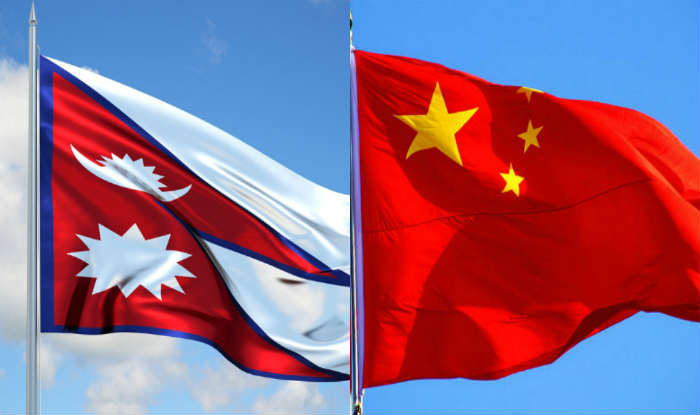Building relations and breaking barriers
(Source: www.ccnimport.com)
Over the past year, there has been much talk—on public forums and in the public sphere—about how Nepal is solely dependent on India for its economy and trade. That topic of dependence came to the fore especially during the Indian economic blockade, which left Nepalis scrambling for oil and gas, basic necessities—especially in urban areas. Many of us understood the perils of importing goods only from India (around 98 per cent of Nepal’s trade activity takes place via India). As the general public struggled to procure oil, gas and other basic goods, businesses throughout the country were also hit hard because trade between Nepal and India ground to a complete halt during the blockade.
But during this deadlock, on March 21, in Beijing, the Nepali government was able to seal 10 separate agreements with China. The agreements were signed in the presence of Deputy Prime Minister and Foreign Minister Kamal Thapa, Prime Minister KP Sharma Oli, Chinese premier Li Keqiang and Chinese president Xi Jingping. These agreements and Memorandums of Understanding focused primarily on Nepal’s making use of China’s seaport facility, exploring the possibilities of the signing of bilateral free trade agreements, exchanging supervisory information, building a regional international airport in Pokhara and other details that would help further the relationship between China and Nepal.
While these pacts are alluring, they could have both positive and negative impacts on the Nepali economy and the overall Nepali business ecosystem. Let’s analyse what three of the major agreements hold for us.
Seaport access

(Source: il5.picdn.net)
Getting access to China’s seaport could change a lot of things for Nepal. One of the challenges of being a landlocked country is that we don’t have direct access to the sea, and it is only one Indian port that has been providing our access to the sea. But because of the deal signed, we now have access to a Chinese port. “Rather than an alternate, we should consider this an addition,” says Dr Hemant Dabadi, Senior Fellow at Samriddhi, The Prosperity Foundation; former senior economist at FNCCI; and former Director of Research, South Asia Watch on Trade and Economy. Not only that, reports suggest that the Kolkata port, the only Indian port that connects our trade to the world, has become congested. This is why Nepali businesses’ having an additional route, not an alternate, to what they currently have should help with connectivity issues.
But building that link to the Chinese port is not as easy as it seems. The terrain between China and Nepal is unforgiving, and there is of course the great Himalayan barrier that needs to be tackled. “I doubt that the seaport can be used right away,” says Dr Dabadi. “These ports are more than 3,000 km away from the border and much farther than the Indian ports, which are at a distance of only about 900 km. It can also be difficult for cargo to reach Kathmandu because the vehicles have to traverse more than 1,500 km of terrain that climbs and dips in many places. They have to go from sea level to the mountains and then descend again to reach here. Obviously transporting things here won’t come cheap.”
Even so, the agreement does present an opportunity. “Through China, we might be able to access some countries around the world, especially the central Asian economies, at a much cheaper cost and much more effectively than how we are using the Indian route,” says Dr Dabadi. “Japan, or the West Coast of the US, Hong Kong, Ko-rea, will be cheaper to access because the sea distance from the Indian port is more than it would be from the Chinese port.” But before Nepalis celebrate the to-be-built route, the government here must first conduct a thorough cost-benefit analysis.
“Through China, we might be able to access some countries around the world, especially the central Asian economies, at a much cheaper cost and much more effectively than how we are using the Indian route,” says Dr Dabadi.
If the feasibility studies come up with promising findings, that should help Nepalis free themselves of their mental shackles. “Psychologically, we believe we are dependent on India, and this access will remove this mindset. It will give confidence to Nepali businessmen and to the general people,” says Dr Dabadi.
Exchange of supervisory information

(Source: ekantipur.com)
The memorandum of understanding signed between Nepal Rastra Bank and the China Bank Regulatory Commission enables both regulators to exchange supervisory information. “This is a significant agreement,” says Dinesh Karki, Researcher at Samriddhi, The Prosperity Foundation. “When there is the facility for opening bank branches in each other’s country, that should ease trade between us,” he says.
There are certain problems while trading with China, and the new agreement should provide some solutions. “Basically, one of the problems exporters and importers in Nepal face has to do with the payment mechanism. Traders have to make use of hard cash to conduct business transactions,” says Dr Dabadi. “With the agreement in place, cooperation between banks is now possible, and it will be much easier for Chinese or Nepali entrepreneurs to transfer money between the countries. And in turn, trading done through informal routes will also decrease.”
It will also be easier for traders to take out loans in each other’s countries. Once that happens, “Nepal will also be a favourable investment destination,” says Karki, as China is currently diversifying its foreign investment, which is expected to triple from USD 6.4 trillion to 20 trillion in the next five years, according to the Financial Times.
“Right now, the proportion of Chinese investment in Nepal is negligible, especially compared to what they are investing in other countries,” says Dr Dabadi. “But with the deals, Chinese investors will have more confidence to invest in Nepal.”
“Nepal should be open to FDIs (Foreign Direct Investments),” says Karki. With FDI flowing into Nepal from countries such as China, benefits will flow too. This could lead to a growth of businesses that home in on the resources they can use for trade, and employment opportunities too should increase. But local businesses will also need to compete with Chinese companies, and to do so, they will have to raise their standards. And there will be transfer of skills and technology, which should help businesses here.“Overall, all of this will stimulate economic development here,” says Karki.
Airport in Pokhara

(Source: i.ytimg.com)
China will help fund and build a new regional international airport in Pokhara. Of this 75 per cent of the funding will carry a 2 per cent interest rate while the rest will be interest-free. The airport is to be built by China's CAMC Engineering Co. Construction on the airport started on April 13, and is expected to be finished by 2020.
“There is no doubt that having a new airport in Pokhara is going to be extremely beneficial for us,” says Dr Dabadi. “Direct flights to Pokhara will spur business expansion there, especially in the tourism sector.” Since everything does not necessarily need to be concentrated in Kathmandu, “it will be easier to carry out air trades through regional airports,” says Dr Dabadi. “But everything depends on the technicalities in the deals—whether the airport and the airplanes will be allowed to be used for trade or not.” The airport should also help attract more visitors to the trekking routes around Pokhara, and to increase tourist flow into Mustang and Manang.
Overall benefit

(Source: india.com)
China is a fast-growing economy, and in the near future, it is going to be the largest economy in the world. “It is therefore necessary to increase economic linkages with China because if we are able to tap into even a small sector of their rapidly growing market, then we can reap many benefits,” says Dr Dabadi. “But until now, we have not been making agreements like we were doing a business with China. We only keep asking these countries to do something for us. Unless both parties gain something out the deals, it will not be sustainable.”
“But until now, we have not been making agreements like we were doing a business with China. We only keep asking these countries to do something for us. Unless both parties gain something out the deals, it will not be sustainable.”
Ripple effects

(Source: www.rippleeffectweb.com)
Rather than the direct impacts, it’s the knock-on effects that will help the Nepali economy. The new pacts will see the free market become more challenging yet more productive than before. But it should be noted that the signing of the pacts is just the foundation. There is more work to be done to reap maximum benefits from this. We could start by pushing for the building of a land route to China, because the long-term gains are contingent on that network’s being in place.
“With new options on the table, there will be opportunities for startups too,” says Dr Dabadi. The new pacts should provide new areas for entrepreneurs to explore. Startups and small businesses need to be flexible enough to adapt to the changing landscape that the foreign direct investment from China will create, and raise their standards to improve their own efficiency. Only if our businesses are ready to compete in the new marketplace, will the economy grow.
Startups and small businesses need to be flexible enough to adapt to the changing landscape that the foreign direct investment from China will create, and raise their standards to improve their own efficiency. Only if our businesses are ready to compete in the new marketplace, will the economy grow.
* First published in M&SVMAG













